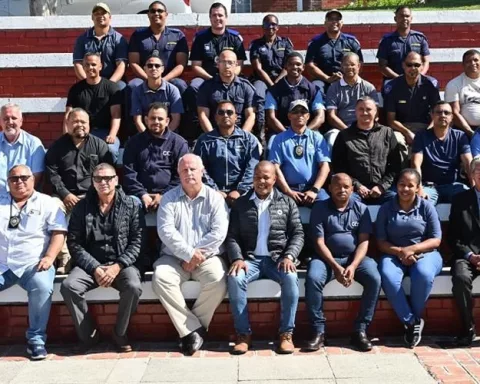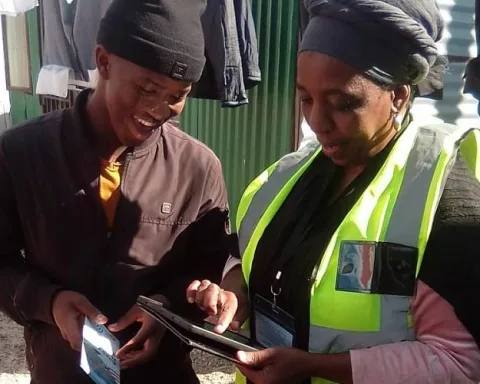NASA has achieved a groundbreaking feat in space communication technology by transmitting a near-infrared laser carrying test data over a distance of 16 million kilometers, setting a new record. This technological leap marks a significant advancement in data transmission across the solar system, with the potential for higher data rates and the possibility of transmitting high-resolution images and even streaming video. The DSOC project envisions data rates at least 10 times more than existing technology, with the potential to prepare for future deep space missions and sending humans to Mars.
NASA’s Pioneering Achievement in Laser Communication
NASA has set a new record by successfully transmitting a near-infrared laser carrying test data over an unheard-of distance of 16 million kilometers, part of NASA’s Deep Space Optical Communications (DSOC) experiment. This technological leap marks a significant advancement in data transmission across the solar system, projecting the potential for higher data rates and the possibility of transmitting high-resolution images, scientific data, and even streaming video.
NASA’s Pioneering Achievement in Laser Communication
NASA has taken a giant leap forward in space communication technology, setting a new record by successfully transmitting a near-infrared laser carrying test data over an unheard-of distance. This laser traveled over 16 million kilometers, a distance approximately 40 times further than that between the Earth and the Moon. This remarkable feat is part of NASA’s Deep Space Optical Communications (DSOC) experiment.
Optical or laser communications have long been viewed as the next big thing in the realm of interstellar communication. The recent breakthrough of the DSOC experiment substantiates this belief. The experiment pushed the boundaries of technological innovation by using a near-infrared laser for encoding and transmitting test data from nearly 16,093,440 kilometers away. The receiving end of this transmission was the Hale Telescope located at Caltech’s Palomar Observatory in San Diego County, California.
This technological leap, referred to as the “first light,” marks a significant advancement in data transmission across the solar system. It symbolizes the dawn of a new age in space communication, projecting the potential for higher data rates and the possibility of transmitting high-resolution images, copious amounts of scientific data, and even streaming video.
The Promising Future of DSOC
The DSOC project, supervised by NASA’s Jet Propulsion Laboratory, envisions data rates that are at least 10 times more than the existing standard radio frequency telecommunications systems of a similar size and power. The potential impact of this advancement is huge, especially for future deep space missions. These missions are expected to generate increasingly intricate and voluminous data.
Trudy Kortes, the director of Technology Demonstrations at NASA Headquarters in Washington, D.C., expressed her excitement over this significant achievement. She stated, “Achieving first light is one of the many crucial DSOC milestones in the coming months. It paves the way for higher-data-rate communications that can transmit scientific information, high-definition imagery, and streaming video. This is a crucial step in preparing for humanity’s next giant leap: sending humans to Mars.”
Overcoming Challenges in DSOC’s Journey
Attaining this milestone was not devoid of obstacles. The DSOC project had numerous challenges to overcome, including removing the protective cover for the flight laser transceiver and powering up the instrument. At the same time, the Psyche spacecraft conducted its own checks, including powering up its propulsion systems and testing instruments. These instruments are scheduled to study the asteroid Psyche when the spacecraft reaches it in 2028.
This trend-setting undertaking is poised to revolutionize how spacecraft communicate and how they gather and transmit data. The DSOC experiment and its accomplishments represent a bold step forward for science and exploration. They hold the promise of reshaping our understanding and exploration of the universe. As the scientific community and space enthusiasts around the globe celebrate this achievement, anticipation builds for the future possibilities this breakthrough will enable.
What is DSOC?
DSOC stands for Deep Space Optical Communications, which is a project by NASA’s Jet Propulsion Laboratory to develop laser communication technology for deep space missions.
What is the significance of NASA’s achievement in laser communication technology?
NASA’s achievement in laser communication technology is significant because it marks a new record in data transmission across the solar system, with the potential for higher data rates and the possibility of transmitting high-resolution images and even streaming video. This technological advancement is crucial to prepare for future deep space missions and sending humans to Mars.
What was the distance covered by the near-infrared laser carrying test data?
The near-infrared laser carrying test data traveled over a distance of 16 million kilometers, which is approximately 40 times further than the distance between the Earth and the Moon.
What are the potential applications of the DSOC project?
The DSOC project envisions data rates at least 10 times more than existing technology, with the potential to transmit scientific information, high-definition imagery, and streaming video. This has significant implications for future deep space missions, which are expected to generate increasingly intricate and voluminous data.
What challenges did the DSOC project face in achieving this milestone?
The DSOC project had to overcome numerous obstacles to achieve this milestone, including removing the protective cover for the flight laser transceiver and powering up the instrument. At the same time, the Psyche spacecraft conducted its own checks, including powering up its propulsion systems and testing instruments.
What is the future of space communication technology?
NASA’s achievement in laser communication technology represents a bold step forward for science and exploration, holding the promise of reshaping our understanding and exploration of the universe. It is anticipated that this technology will revolutionize how spacecraft communicate and how they gather and transmit data.









